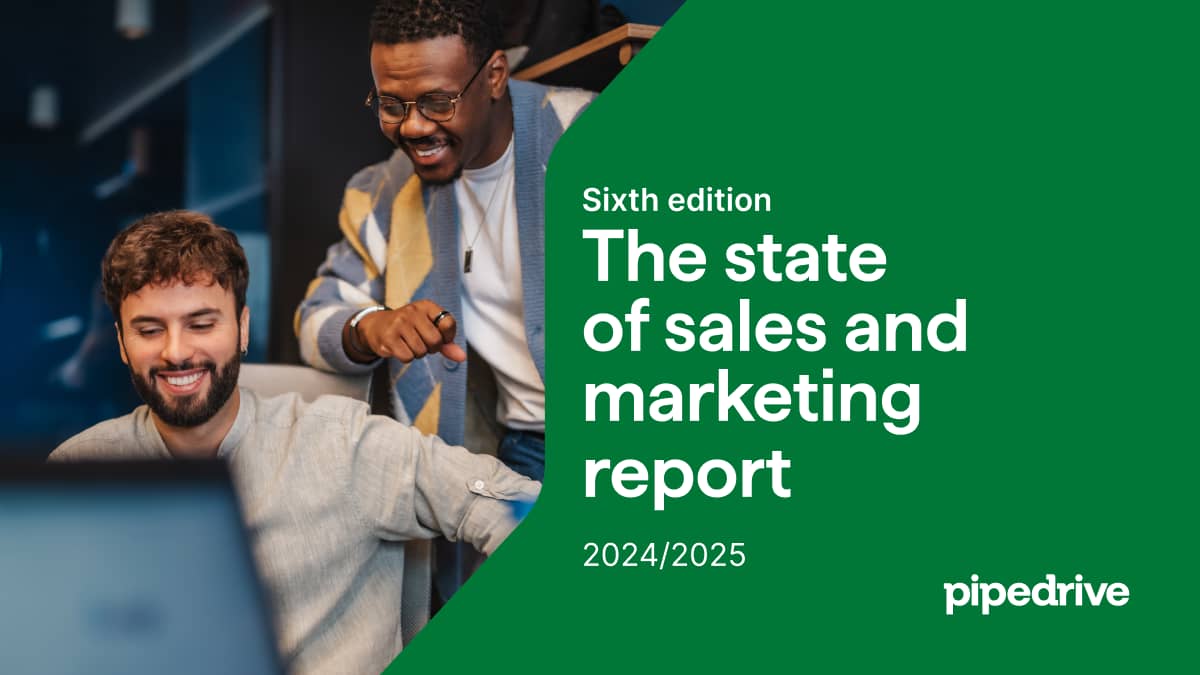Each year, we speak with salespeople, marketers, founders and business experts around the world to understand their wins, challenges and what’s changing in their industries.
In this year’s State of Sales and Marketing report, we explore how shifting work models, AI adoption and evolving employee expectations are reshaping the profession – and why flexibility, smart tech and well-being matter more than ever.
Download the State of Sales and Marketing Report for 2024/2025
Economic pressures are making it harder to hit targets
Rising global economic challenges are gradually making it more challenging for sales professionals to meet their goals. In 2024, 57% of salespeople reached their personal sales targets – the lowest rate in five years.
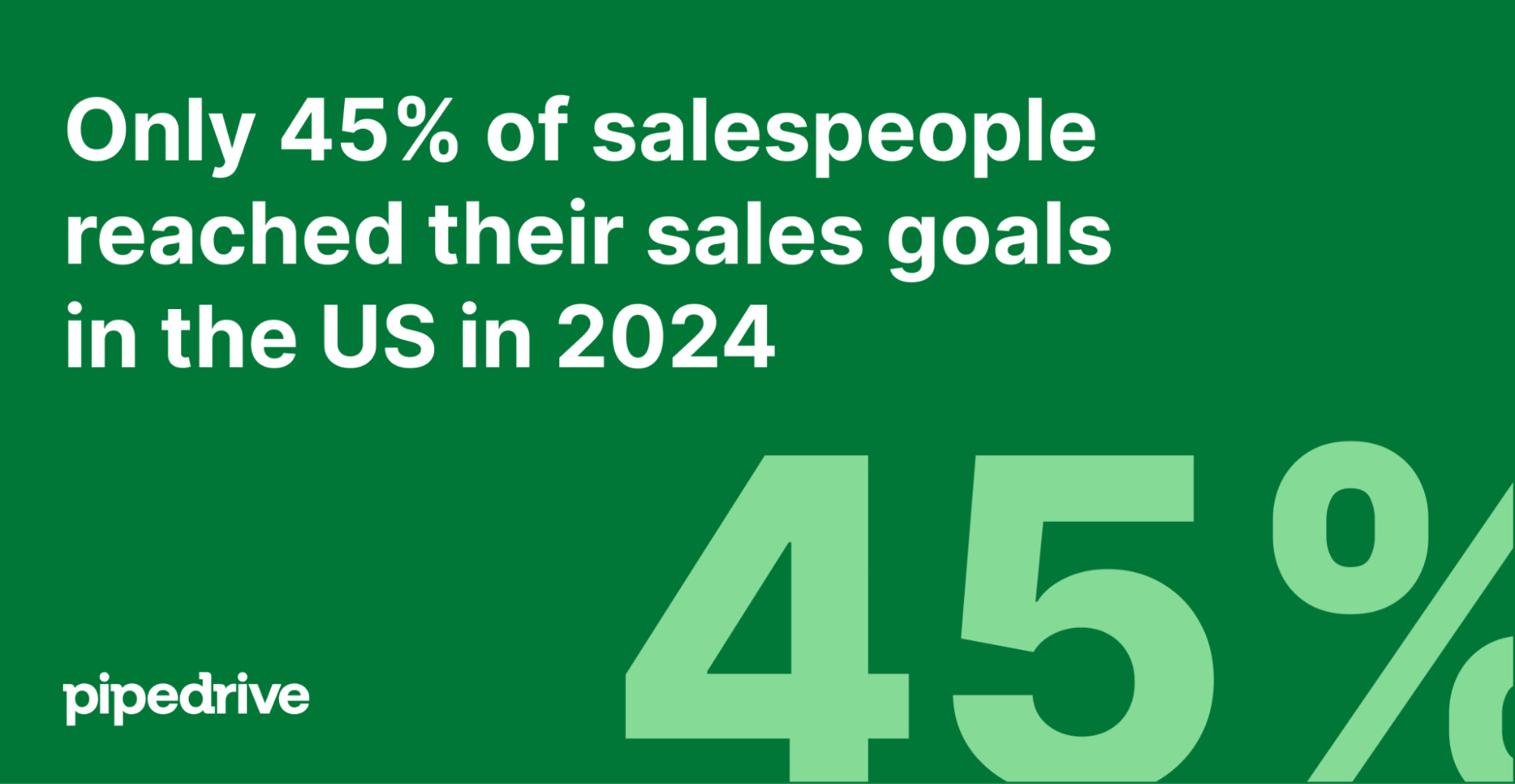
Smaller companies are suffering the most, with just 48% of salespeople from micro-sized businesses (1–10 employees) meeting their performance goals. Of those businesses, only 54% typically meet their regular sales quota.
Fully remote work may slightly hinder sales performance. Only 40% of remote reps who feel more productive in the office meet their sales targets, compared to 53% of those who feel productive working remotely.
Being surrounded by supportive colleagues can play a key role in helping sales professionals perform at their best.
Longer hours aren’t leading to better performance
More sales and marketing professionals are clocking longer hours, but the extra time isn’t translating into better results.
In 2024, 75% of respondents worked more weekly hours than planned. Some logged over 20 extra hours, resulting in 12-hour workdays.
Yet, those putting in overtime are actually less likely to hit their sales goals. 63% of respondents who don’t do any overtime achieve their targets, compared with 55% of those who do.
This growing workload is damaging employees’ work-life balance.
While most respondents still rate their work-life balance as good or very good, this number has dipped slightly from 64% to 61%. Meanwhile, one in 10 feel overwhelmed and unbalanced – a stable figure that continues to concern employers.
Age also plays a role in how overtime affects work-life balance. For example, 30% of 26–35-year-olds aren’t doing any overtime at all, compared with 18% of 51–65-year-olds. They appear to prioritize free time more and are better at maintaining boundaries.
These findings raise critical questions about the root causes of overtime.
Is it due to too many manual tasks, lack of automation, unrealistic targets or deeper cultural expectations?
Whatever the reason, the current trend is unsustainable, and it’s clear that more hours don’t guarantee better performance.
Hybrid work wins on satisfaction
The hybrid model remains the most popular work setup, with 57% of respondents saying their company offers it (20% work fully remotely and 23% work entirely on-site).
Workplace satisfaction closely relates to the flexibility of workplace arrangements. Employees who are fully or mostly remote are about twice as likely to be very satisfied with their work model as those employed fully on-site.
However, 5% of companies have taken the opposite route, asking staff to return to the office. This trend is more common in large businesses, with 8% implementing return-to-office policies – double the rate seen in micro-companies.
46% of marketing and sales professionals also work mainly or entirely in the office, while only 39% work mainly or fully remotely.
Productivity perceptions often align with current work setups. Remote workers feel more productive at home, while on-site staff believe they work best in the office.
However, one in five on-site workers think they’d perform better remotely – double the number of remote workers who say the opposite.
The four-day workweek is also gaining ground, albeit slowly. The most favored setup combines a hybrid work model with a four-day workweek.
Most companies still follow the five-day format, but 18% now offer a four-day week to at least some staff. Only 8% of marketing and sales employees are able to take advantage.
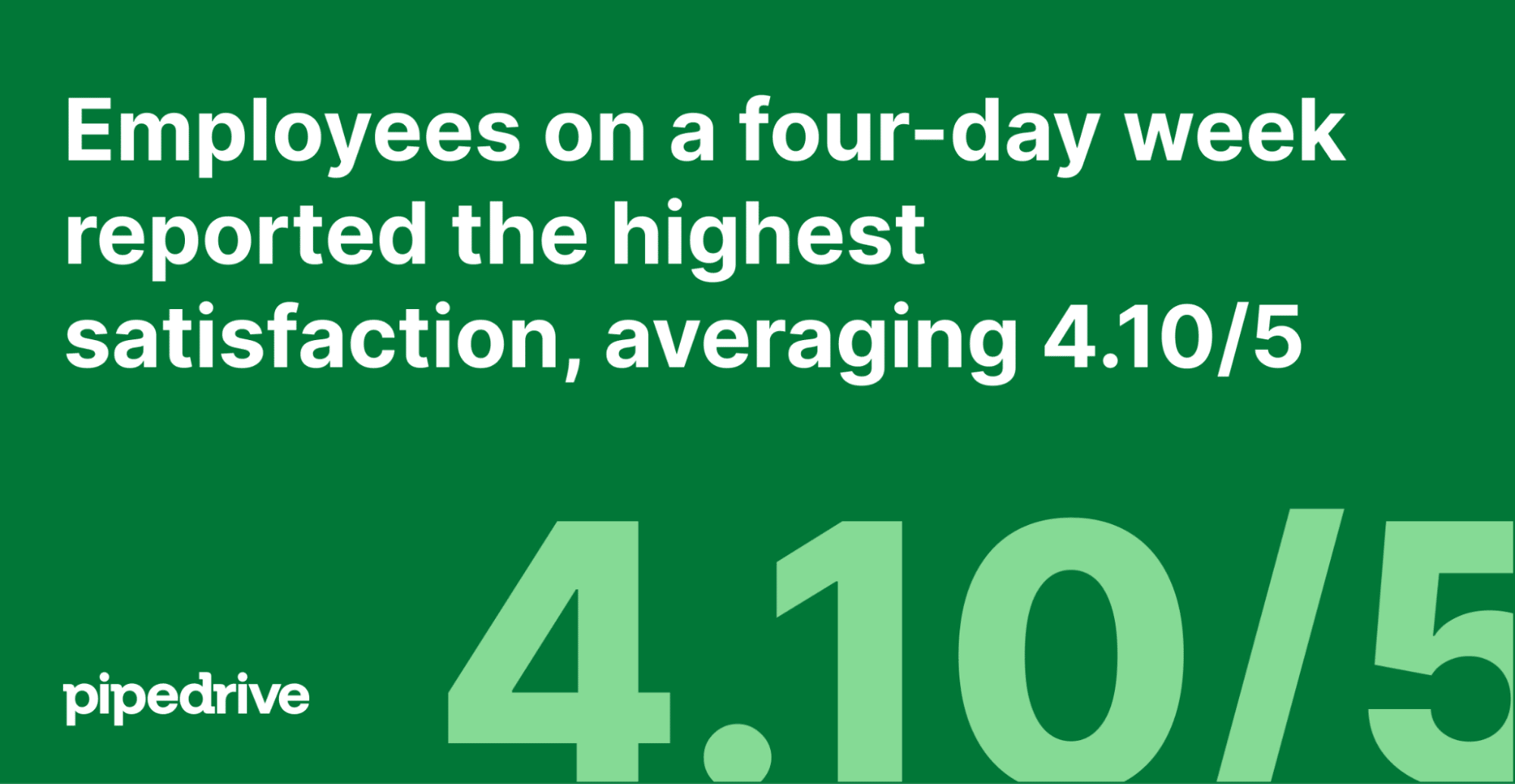
69% of those working a four-day week say it improves their productivity. These employees also report better work-life balance and are more likely to reach their goals.
Feeling valued matters more than ever
Soft factors like appreciation, open communication and strong leadership now outweigh traditional perks in determining how employees feel about their employers.
The most influential drivers of satisfaction include feeling valued, having a transparent work environment, strong leadership and clear career growth. While most companies perform well in these areas, career development opportunities still lag behind.
Base salary and bonus structures also receive lower satisfaction scores, especially among sales professionals. When choosing a new role, professionals seek fair compensation, a solid bonus structure and work-life balance.
Most sales and marketing professionals are satisfied with their employer. 84% say they’re either rather or very satisfied with their employer, with 43% reporting very high satisfaction.
However, satisfaction levels vary slightly across different groups.
Younger employees (under 35) tend to be more satisfied overall, while those aged 36–50 are more critical. Satisfaction also drops in companies that recently changed their working setup, such as closing offices or asking staff to return on-site.
Marketers also place more emphasis on remote work options, while sales professionals prioritize bonuses and career advancement opportunities.
AI adoption is solid – and growing
Most sales and marketing teams have embraced AI or plan to adopt it.
37% of sales professionals and 41% of marketing professionals have integrated AI into their workflows. Of those who haven’t, 80% are considering adopting it.
Medium-sized companies are leading AI adoption, with 44% implementing it into their sales processes. Large enterprises are the slowest adopters (30%), likely due to complex systems, strict permission processes and data rules and regulations challenges.
Marketing professionals report the greatest success with AI tools (especially for creating new content). Marketers also estimate higher time savings than their sales counterparts. Time efficiency is proving to be one of AI’s core benefits.
36% of respondents save up to two hours per week, while another third report saving between three and five hours.
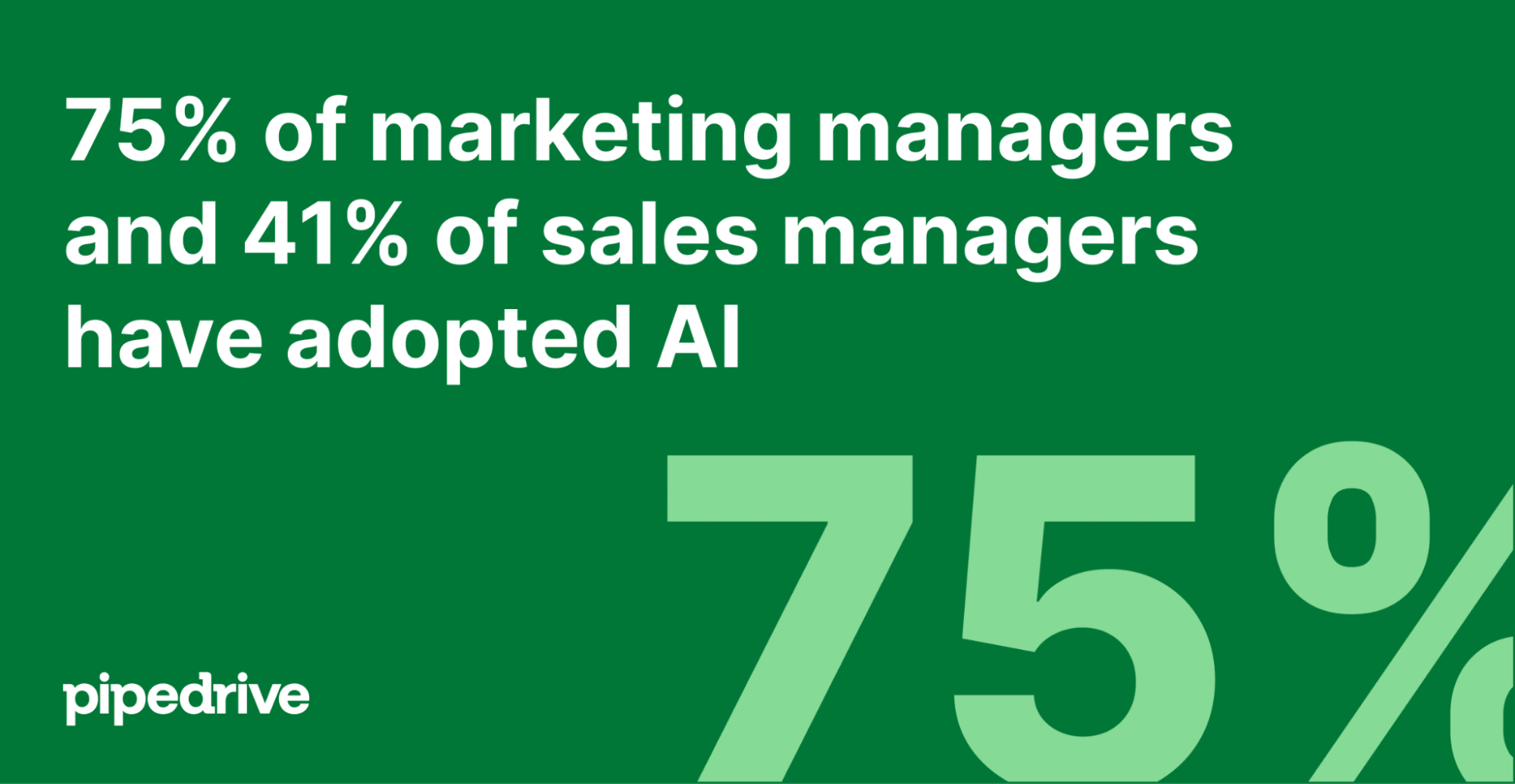
Customer support is another area where AI adoption is growing fast. Around 23% of companies already use AI tools (like chatbots) to support or partially replace human representatives. These tools bring efficiency and cost benefits, but the impact on the customer experience is mixed.
Half of the companies using AI in customer service report no noticeable issues, while the other half have seen more customer frustration and disengagement.
A hybrid approach (where AI handles simple queries and humans take on complex or emotional cases) often appears as the most effective setup.
AI-powered communication is also popular with sales and marketing teams.
Most workers who implement AI into their sales process use it mainly for communication-related tasks like content creation (74%), summarizing existing content (56%) and preparing sales materials (46%).
On the other hand, fewer than one in four respondents use AI for data-driven tasks like pattern analysis, predictive analytics and forecasting. This highlights AI’s untapped potential, which may develop as users become more familiar with its capabilities.
Concerns around AI adoption
Despite AI growing in popularity and showing no signs of slowing down, there are still concerns around using it. Of those using AI, 13% worry about job displacement, but only 6% have actually seen their team size shrink because of AI.
Other AI doubts include data privacy, the reliability of AI outputs and security. Trust in human judgment remains higher.
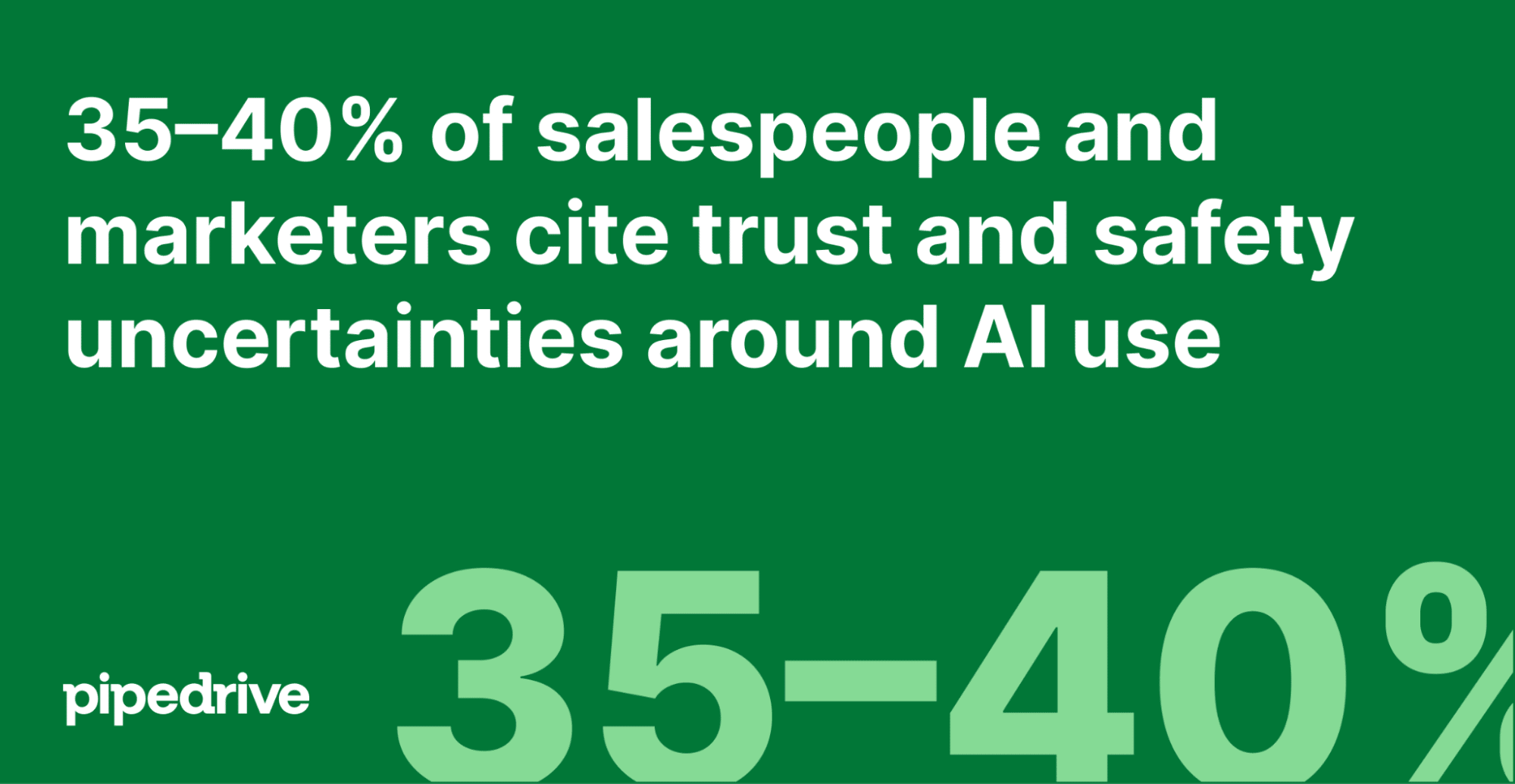
17% of sales professionals don’t plan to adopt AI, mainly due to limited knowledge and uncertainty about how to integrate it with their current systems.
Younger sales professionals are far more open to AI adoption, with employees between 18–25 being twice as likely to use AI tools as those aged 65 and over.
However, younger employees also tend to be more anxious about AI – especially given the evolving job market.
To address AI-related fears, companies need to educate their workforce. Over half of those concerned about AI-driven job loss (53%) say training and upskilling are the most effective ways to reduce anxiety.
Leadership also plays a key role. Transparency about future plans for AI can ease uncertainty and build support.
As AI adoption continues to grow, clear communication and accessible training become critical for helping teams navigate the changes.
Final thoughts
The sales and marketing landscape is changing fast, fueled by flexible work models, smarter AI tools and a renewed focus on employee well-being.
While challenges like economic pressure and heavier workloads remain, teams that embrace the right tech and prioritize clear communication are thriving.
For deeper insights and the latest trends shaping sales and marketing, download The State of Sales and Marketing 2025 report today.
